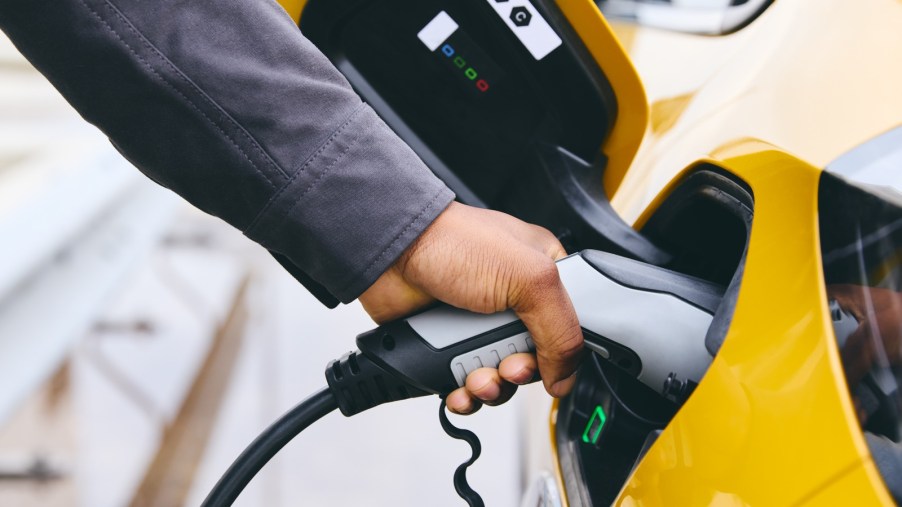
46% of EV Owners Want to Swap Back to Gasoline
McKinsey & Co.’s “2024 Mobility Consumer Pulse” study includes 100,0000 “data points” gathered from surveys, interviews, and focus groups. Its most shocking finding this year is that 46% of EV owners in the US are “likely to switch back to gasoline” with their next vehicle purchase. Thirty five percent of respondents complained about the charging network. But I believe current EV design and marketing contributed to their experience.
The international study found surging demand for EVs, with China leading the way. Currently, over 50% of vehicles sold in China are EVs. McKinsey & Co. predicts that global EV sales will grow sixfold by 2030. But that doesn’t mean everyone, everywhere is happy with the EVs they’ve already bought. Here is how that buyer’s remorse breaks down by country.
| Country | % Likely to Switch Back to Gas |
|---|---|
| Australia | 49% |
| United States | 46% |
| Brazil | 38% |
| China | 28% |
| Germany | 24% |
| Norway | 18% |
| France | 18% |
| Italy | 15% |
| Japan | 13% |
So why do EV drivers report they are considering a return to gasoline in 2024? Globally, 29% said this is because of inadequate charging infrastructure. According to McKinsey, 35% specified that it’s the public charging network that isn’t good enough. Another 34% said EV ownership costs are too steep. Thirty-two percent said EVs disrupted the way they drive on long trips.
This isn’t the first time we’ve seen EV owners express buyer’s remorse. I’ve previously reported that 26% of Tesla owners wouldn’t buy their car again, and that 1 in 5 Californians who bought an early EV (2012-18) went gas-powered later.
So what’s going on here? Those Tesla owners seem most unhappy with their car’s comfort and “usability.” Many of those early adopters in California may have moved from the city to the country during the pandemic and added at least one gasoline-powered vehicle to the fleet. Other early adopters found that circa-2012 public charger placement was downright unsafe, often on the industrial side of town and without good lighting.
But it looks like the amount of dissatisfaction with EVs has only climbed since those earlier studies. This also makes some sense. In 2012, hardcore early EV adopters may have been more forgiving of a “quirky” charging and ownership experience. Many of them may have been in the industry or had other technical expertise. Since then, many automakers have increased EV adoption by positioning these expensive cars as luxury vehicles. But that positioning suggests luxury-level convenience. It is a recipe for unhappy customers.
The “upmarket” positioning of EVs may also contribute to dissatisfaction of charging networks. JD Power found the satisfaction with the public charging network declined from 2022 to 2023. That’s the same network, with the same chargers. What changed? The people buying EVs.

That said, between 2022 and 2023, EV numbers increased so wait times may have also increased. Also, as chargers aged, more might have been broken. The public charging network absolutely needs improvement. And with $7.5 billion for public chargers in Biden’s Bipartisan Infrastructure Law, it is improving rapidly. But I think some of this EV-buyer dissatisfaction is due to how EVs are made.
Part of the “upmarket” positioning of EVs included making them bigger and heavier. Heck, we didn’t get the first EV truck until October 2021. Now we have automakers dropping huge battery packs into existing full-frame vehicles (such as the F-150 Lightning or Jeep’s PHEV 4xe) to keep up with monstrous EVs such as the new Hummer and Tesla’s Cybertruck. Meanwhile, automakers are offering some EV crossovers. But those have big battery packs and relatively low charging speeds. This all adds up to abysmal EV roadtrip experiences. And it is all avoidable.
I previously reported on roadtripping in an EV–while headlines said it was impossible. I hopped in a used, $30k Hyundai Ioniq 5 outside of NYC after lunch. Then I spent the afternoon and evening driving to Detroit. My charging times were 20-30 minutes, except for a longer stop I made for dinner. It was the worst case scenario: a busy Sunday when I often had to share chargers. And it was still a great experience. In a gasoline car, I might have saved 5-10 minutes on a couple of the stops and shaved less than 30-minutes off the long roadtrip. Honestly, not a big sacrifice to make.
How is this even possible? Hyundai makes all its EVs with 800-volt fast charging. That’s quicker than the current Teslas. The Ioniq 5 is crossover-sized, but low to the ground for as much range as possible. This means you can get 4.76 miles of driving time for every minute of charging time. But other full-size EVs punch that up to 7.75 minutes of driving time for every minute of charging time.
I’d never suggest that a motorist with only one vehicle who often completes long roadtrips across rural North Dakota should run out and trade their car in for an EV. The current EVs aren’t a solution for every driver. But I am saying that some of the buyer’s remorse reported by EV drivers may be–in part–due to how automakers are designing most new EVs. And perhaps in part due to the models those drivers chose to buy.
Next, find out which EVs outrun range anxiety, or see Out of Spec roadtrip in an Ioniq 5 in the video below:



